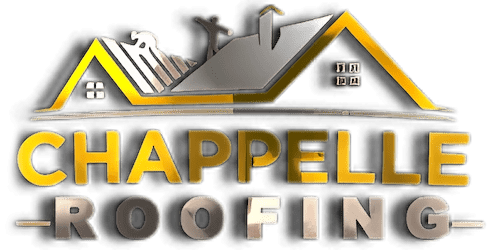It’s the Season of Lights. As December rolls around, and thoughts turn to installing Holiday lights, there are few things you can do to avoid damaging your roof. Also Contact Chappelle Roofing for any kind of roof repair or instillation. OK Whether it is a few strands above the front porch or you want to compete with Chevy Chase’s house from “Christmas Vacation,” even the smallest of holes from hanging lights can cause extensive damage to the interior systems of your home.
The good news: They are simple problems to avoid! Here are 7 Simple and Safe Tips to Installing Lights without damaging your roof.
How can one safely and effectively hang Christmas lights on a roof?
Whether you have a metal, shingle, tile, or flat roof, here are the steps you should follow when putting Christmas lights on your home roof.
1. Safety First!
Your lights should be installed on a clear day, in the afternoon (to allow moisture to burn off your roof), and it is strongly recommended you have a helper, to hold the ladder and in case of emergency. Sort and untangle wires beforehand, checking each strand, and use only extension cords that are UL approved for use outdoors.
2. Only Use Plastic Clips.
Nailing or stapling lights directly to your roof shingles is a guaranteed way to create damage. Shingles are not weather tight if they have been punctured, and even the smallest of holes can let water penetrate the envelope of your home. Nails damage not only the shingle, but can drive directly into your attic space—providing a direct line for water to reach insulation and drywall! This can result in extensive damage before you even detect a problem. Plastic clips are designed to hang directly on your gutters, eaves and shingles without puncturing them and are the most effective, inexpensive alternative to nails and staples.
3. Walk Carefully.
The goal is to minimize the amount of walking on any roofing system. It is both unsafe for an untrained professional, as well not good for your roofing system. If walking is required, be sure to wear soft rubber-soled shoes (to provide good grip) and plan to install your lights on a clear, dry day. Pay attention to morning dew and/or ice, which creates a very slippery surface. In warm climates, plan your work before mid-afternoon as the temperature on your roof can reach well over 100* (25*-50* warmer than the air temperature) and poses risks of heat exhaustion. For homeowners with tile or stone-coated steel roofs, never step in the trough of the tiles, as this can cause cracks, breaks and bends. You should always walk on the battens upon which those materials are installed.
4. Be Aware Up There.
With your focus on hanging lights, you still need to be aware of your surroundings. Before putting up your ladder and while on a roof, be aware of power lines, tree branches, antennas and HVAC units: Anything that can cause you a trip or fall. Also, be sure not to overload any single electrical outlet, as it could result in tripped breakers or an electrical fire.
5. Avoid Damaging The Roof
Depending on the type of house that you have, hanging Christmas lights can be completed without stepping foot on your roof. Loose shingles or tiles can cause accidents, as well as icy or wet conditions. The best way to hang your lights is by stringing them through the plastic clips you can buy at your local big box store and attaching them to your shingles or gutters. Those clips are designed to help you easily install and remove the lights from your home. With that being said, make sure you avoid pulling the lights to remove them from the clips. You can cause damage to the shingles that you have attached the lights to or the lights themselves.
6. Check Your Lights
Be sure to go through all of your lights and look for damaged bulbs or frayed wires. The only thing worse than a light or string of lights going out is a fire…and that’s what can potentially happen to your home. Inspect all lights both inside and outside of your home.
We hope you enjoy the holidays without having to make a trip to the hospital! If you need anything from us, don’t hesitate to reach out.
7. Remove with Care.
It is always disappointing when the Holidays are over; and it is frequently cold and snowy. However, take the same precautions removing lights as you took installing them. Make sure the roof is dry and clear. Take your time: Yanking even plastic clips down can cause damage to shingles, gutters and your eaves! Remove the clips and attached lights one at a time. Be sure to store light strands carefully so they last for many Holidays to come.





